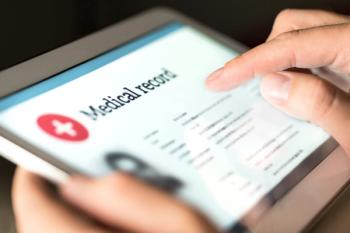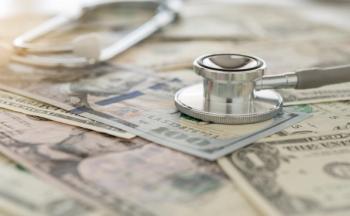
In The Era of AI and Value-Based Care, We Need To Value The Human Side of Pharmacists
After getting my doctorate in pharmacy, my first job was serving as a community pharmacist at a Walgreens in the Bronx.
Two indelible memories from that time: a man whose primary language wasn’t English asking me to help interpret his colonoscopy results, because his doctor hadn’t done so (thankfully, I’d had some gastrointestinal experience and there wasn’t anything abnormal according to the summary); and a long discussion about contraception with a young woman who wanted to take control of her sexual health.
I took these conversations — and these relationships — extremely seriously, because as a community pharmacist, you’re often the last person a patient sees before taking a medication. That means you’re the last one who can tell a young woman that birth control pills are taken orally and not elsewhere — a more common misconception, unfortunately, than you may think. You’re the last one to make sure a patient adheres to their medication or to discuss potential contraindications with drugs they’re already taking. You’re someone in the community who can build enough trust with patients that they feel comfortable going to you with their medical test results.
These responsibilities might seem obvious. However, in an era of value-based care in which providers are increasingly becoming data-entry workers burdened by electronic medical records and in which digital disruptors such as Amazon are threatening the viability of the physical pharmacy, pharmacists forming relationships with patients rather than simply dispensing medication is quickly becoming a lost practice.
But given the need to provide an essential check on automated and clinical rules, forming personal relationships has never been more important. And we’ve seen important parallels in other sectors — where the human side is proving invaluable in our technologically driven age.
I know of pharmacists, and medical toxicologists, who have been told they must make a decision based on price perceptions, and that the clinical evidence is good enough for patients. One therapy is more or less the same as another. But those pharmacists are the ones who know the patients who depend on them, and they regularly stand up for them. We need more of that if we are going to truly reach value-based care and harness digital technology.
If we don’t, I am worried the digital age of cost economics and algorithmic care may steal away how clearly we see patients face-to-face despite all of the talk about consumerization and personalization.
For one thing, we know that patients — and even healthcare workers and executives — don’t want to be lost on one end of a value-based care algorithm. Despite hype around telemedicine and other technologies, a recent
The pharmacist might not be the high touch point that first comes to mind given the importance of, say, nurse practitioners and physician assistants. But pharmacists and medical toxicologists can also rethink their role, as their jobs, when done well, incorporate a cultural literacy and an anthropology that go beyond a mere quantitative approach.
I learned that in the Bronx. But I’ve also seen its importance in emergency rooms across the country, where pharmacists are often the ones most aware of drug guidelines, contraindications, and efficacy. Being on the floor with physicians in the ER, clinical pharmacists become more than a dispenser of medication — they become a resource for treatment information. If an overdose patient comes in, a physician may want to go down one treatment route; an on-hand pharmacist, though, might be able to suggest others given the latest medication literature; if a heart attack patient comes in, a pharmacist at the bedside can get the ball rolling, providing the physician with all the possible options they can use; if antibiotics become resistant at any point, pharmacists can bring in knowledge about sensitivities to particular bacteria in the region before the physician puts the patient on another drug.
The healthcare professionals at the
As a medical toxicologist — and given my experience in the Bronx — I know it’s not easy to combat the pressure to make medical decisions in an economically convenient manner, in a manner that meets strict reimbursement structures. I know how easy it is to just dispense medication, and not choose to get involved in my patients’ lives, whether that patient is a middle-aged South Asian man asking after his colonoscopy or a young woman asking after contraception.
But that’s not what I went into healthcare for. It’s not (or at least shouldn’t be) what any of us went into medicine for. In a medical age dominated by new technologies and the dollar, let’s not forget this simple fact: that at the end of the day, we’re humans who want to do our best to care for other humans.
About the Author
References
- Detrixhe, J. (2019). Why robot traders haven’t replaced all the humans at the New York Stock Exchange—yet. [online] Quartz. Available at:
https://qz.com/1078602/why-the-new-york-stock-exchange-nyse-still-has-human-brokers-on-the-trading-floor . Accessed July 15, 2019. - Halsey III, A. (2019). Does autopilot dull the skills of U.S. airline pilots? [online] washingtonpost.com. Available at: https://www.washingtonpost.com/local/trafficandcommuting/does-using-an-autopilot-dull-the-skills-of-us-commercial-pilots/2016/01/13/00e458fe-ba13-11e5-829c-26ffb874a18d_story.html?utm_term=.74da0b98b814 [Accessed 15 Jul. 2019].
Newsletter
Pharmacy practice is always changing. Stay ahead of the curve with the Drug Topics newsletter and get the latest drug information, industry trends, and patient care tips.















































































































